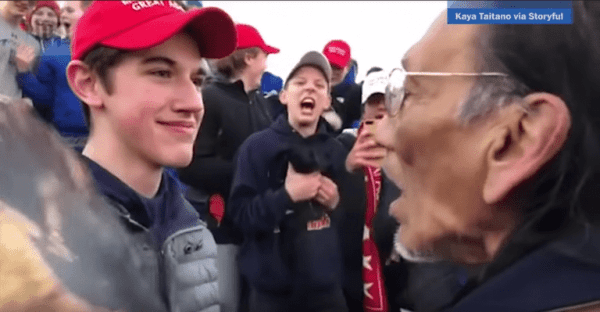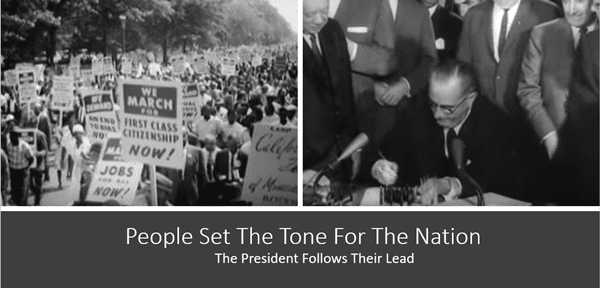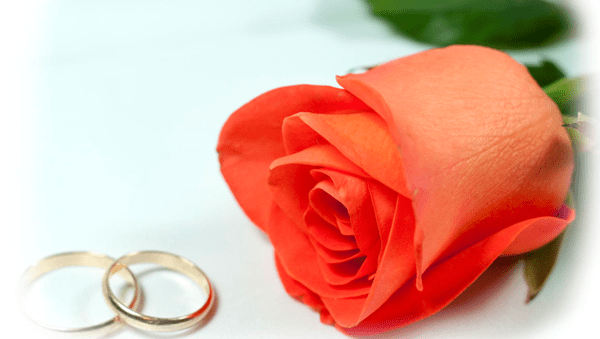The Danger And The Opportunity
In the midst of conflict, there is always a danger of losing whatever it is we are fighting for in a sea of outrage as waves of anger crash upon the shores of our limited perceptions of whomever it is we are fighting against.
As the Covington Catholic scandal fades from the news cycle, I fear we’re in danger of losing sight of the reasons why the students and the Indigenous people each gathered at the base of the Lincoln Memorial. Yes, we know that the former group was there for the March for Life, and the latter was there for the Indigenous Peoples’ March. But the causes for which they stood are being overshadowed by their clash with each other. Yes, within that clash itself there are vital lessons to learn, but they should tie into, not distract from, a larger picture … a deeper need for understanding and healing and restoration. All of us, witnesses to the various media spins of this snapshot of polarized Americana, are in danger of losing what we most value in our quest to show our solidarity with our political and ideological allies against the “others.”
I say all of this not to make false equivalencies or deny the deep pain that has erupted to the surface, but rather to try to seize hope from the jaws of chaos and condemnation. On the other side of this danger is an opportunity for real change and restoration.
My Evolution of Understanding
In the image we saw, two people stood face-to-face, and yet many of us outside observers looked past the humanity of one or the other of them. My visceral reaction upon first seeing the image was an indescribable mixture of sorrow and anger at what looked like one of the cruelest smiles I had ever seen. I saw a face of arrogance and privilege devoid of empathy, surrounded by a sea of mocking gestures – chants and tomahawk chops – aimed at humiliating a Native American. My instant judgment left little room for redemption.
I had to remind myself that I did not know everything, and I held out a shred of hope that there might be mitigating factors, even as I read impressions that reinforced my own (such is the mimetic nature of humanity… we influence each other). As the rest of the story came to light, and I saw that the elder, Nathan Phillips, had inserted himself into the midst of the boys, my hope grew despite my confusion. Maybe the boys were confused; maybe they thought they were showing solidarity. I still interpreted the chops and chants as mocking, but there was also a lot of generic bouncing and confusion and standing still, and I no longer saw the crowd as a malicious mob.
Things started to fall into place as I listened to Mr. Phillips’s side of the story. He had gone to make peace when he believed the crowd was on the verge of violence in response to the taunting of the Black Hebrew Israelites. Though he hadn’t agreed with what the preachers of wrath had been shouting, he saw them vastly outnumbered by a crowd of boys getting increasingly rowdy. What Elder Phillips interpreted as an escalation of tensions, I interpreted, from the short videos I had seen, as a pep rally. But I knew I came from the perspective of shelter and privilege. What must Mr. Phillips have seen, from a perspective of a history on the underside of racism and stereotypes, land theft and broken promises?
My initial anger gave way to the realization that there had been confusion and misjudgment on all sides, but it wasn’t until I finally watched the long, unedited video narrated by the Black Hebrew Israelites that I realized the extent of my own misjudgments.
I saw a large group of teenagers verbally accosted by men spewing hatred and condemning them to hell. The Black Hebrew Israelites were stating some truths about the ugliest sides of American history and present-day imperialism, but they were mixing these truths with hate at passersby, including the Native Americans gathered for their demonstration. I heard misogyny, homophobia, and religious bigotry, but in that video, most of it was not coming from the students. (Yes, I heard egregious misogyny by some of the students in other clips, but in the lead-up to the viral image, I did not see students engage their harassers.) The only time I heard “Build that wall,” was when the Black Hebrew Israelites shouted it mockingly. It was about that time that the boys tried to drown out the hate directed not only at them, but at everyone, with their school chants.
That’s when Elder Phillips and some followers approached the boys. I believe Elder Phillips misheard the instigator of the chants, misunderstood the rowdiness of the teens he saw in front of him, and did approach for the sake of making peace. I also believe that, in the context of the mutual harassment the boys and the Native Americans were hearing from the Black Hebrew Israelites, the enthusiastic jumping could well have been a sign of solidarity on the part of the boys against their mutual adversary. I think the Native Americans caught up in the midst of it all were afraid and insulted. I don’t excuse the tomahawk chops or chants, and I think some intentional mockery was mixed in with the confusion. But in a world where a stadium full of adults were doing the same cheer for the Kansas City Chiefs on the same night the video went viral, I feel the need to at least try to suspend judgment on a group of confused kids. They could have done better. We could all do better. Impact matters more than intent, and the impact of the whole incident has been a lot of pain compounded by misunderstanding.
The Humanity Behind The Hate
But. If we can try to extend the benefit of the doubt, if we can insert mercy into a situation that so desperately needs it, if we can find the humility to see the humanity on all sides in all of its brokenness and potential for good, then we can extract hope from this mess and forge the passion on all sides into something constructive, something restorative, something that can begin to bridge the divisions so sharply drawn in this debacle.
A more thorough picture gives me hope that the Covington Catholic students were not acting out of malice, and that many in their own way were trying to do what Elder Phillips and his followers were trying to do – ease tensions. And seeing the commonality of purpose in this brief instant helps me to see a commonality of purpose for the reasons they were each gathered on the steps of the Lincoln Memorial. The people in both the March for Life and the Indigenous Peoples March were striving to give voice to the vulnerable and voiceless. Despite the ignorance and bigotry some of the boys displayed in this and other instances, I choose to believe that they had some good intentions at heart. And though I believe Elder Phillips misjudged the intent of the boys he saw, I know that he and others gathered to save the country that has been home to their ancestors long before it was overtaken by those who have pushed them aside and destroyed their lives and land.
The clash on the steps of the Lincoln Memorial, and its encapsulation of the clash of cultures in the United States, has become the story. But there is a deeper story. There is a world of wrong and pain and sorrow, and a clash of struggles as people strive to amend such wrongs. And the only way we can begin to hope for a peaceful resolution to this story is if we let the love for what we are fighting for eclipse and transform the hatred of those we are fighting against.
What Are We Fighting For: The March For Life
The March for Life at its best is a call to acknowledge life from its very beginning, within the womb. A consistent life ethic teaches that life is sacred from womb to tomb, and while I can’t speak for the Covington students, I know that many people I know who are pro-life believe in that ethic. There is a lot of disagreement over the ethics of abortion including the understanding of when life begins, and there is all-too-often a lack of empathy for the struggle women go through who may choose abortion because of non-consensual circumstances leading to the pregnancy (rape and incest) financial constraints, or medical difficulties.
I struggle with the issue of abortion because I believe life begins at conception, but I also believe there are situations in which carrying a pregnancy to term places an unimaginable hardship on the mother. I want abortions to be safe, and the only way they can be safe is if they are legal, and I want them to be rare. I believe that all life is interconnected, and that concern for life in the womb should be intertwined with concern for life out of the womb. The best way to ensure that life is the blessing it is meant to be for everyone is to work for a world that acknowledges the dignity of every person, where we understand our interdividuality and our responsibility to each other. There will always be debate over whether and how to restrict abortions, but we can all work together to ensure that mothers, parents, families and communities have the resources to care for life in all of its stages.
Only if we can see each other as partners in the commitment to enhancing life, no matter where we fall on the pro-life/ pro-choice divide, can we work together to ensure a world that cares for all. This means holding everyone, including members of the pro-life movement, and especially ourselves, accountable for ending the life-destroying powers of racism, misogyny, homophobia, greed, and violence. But it also means striving to see the good in those on the opposite sides of the political or ideological divide, because otherwise enmity will threaten to eclipse love. In the case of the Covington students, that means striving to see the good in the cause that brought them to DC, even while admonishing the ways misogyny and racism eclipse that good and even if we would advocate reaching that good in a different way.
What Are We Fighting For: The Indigenous Peoples’ March
Seeing the humanity in the Covington students is the best way to ensure that they will see the humanity in those who felt dehumanized by their demonstrations. And whatever the intentions of those students were, this unfortunate incident happened in a nation where our president has used “Pocahontas” as an insult and mocked Wounded Knee, making the wearing of the MAGA hats an insult even if it wasn’t intentional and further contributing to the abyss of misunderstanding and pain. Issues facing Native Americans are being ignored and mocked, and this story has deflected attention away from what the people were demonstrating for.
The Indigenous people were marching in solidarity with Indigenous people worldwide for recognition and acknowledgement in a nation that has largely already confined them to the realm of history. They marched to bring attention to their own continued existence in a nation built on their erasure, to dismantle the myth that they are a part of our past rather than our present. They marched for healing of peoples who have endured genocide and systematic marginalization, and who continue to be plagued by bigotry, environmental racism, imposed poverty, and violence from the outside.
There is an epidemic of kidnapping, sex trafficking, and murdering of Indigenous women. Pipelines have cut through sacred lands and burial grounds and are poisoning land and water, continuing to destroy lives. The government shutdown had a particularly egregious impact on Native American communities. And right now the descendants of those who stole native land are debating a border wall that will further divide tribes that span the US-Mexican border, splitting families, harming the earth, and arrogantly defying the truth of our own status as migrants.
When we listen to Native voices, we remember who we are, and that is the only way we can begin to become a better people. Only by listening to Native voices, heeding their concerns, and following their lead in making reparations to the people and the planet can we truly honor and make room for new life. Because the truth is, the sins of this nation against the Indigenous people of this land are leading us down a path of spiritual and physical death as greed and violence destroy our nation.
The Indigenous People’s March, in other words, was a march for life as well. And for those who support the Covington Catholic students at the expense of the Indigenous marchers, who find it necessary to hate Nathan Phillips and those who followed him in order to show solidarity with the students, it must become clear that the Indigenous people were demonstrating for the redemption of our whole nation, including those boys. Hate on either side diminishes the good for which we are all striving.
Conclusion:
Last week, clashing ideologies came face-to-face at the Lincoln Memorial as a proxy for the clashing ideologies within our nation. But if we can look into the faces staring back at us and see their humanity in all its brokenness and loving potential, we can find the deeper connections we share and work to build a world in which empathy eclipses enmity. Let us pull hope from this chaos, truly see each other, and get to work.












